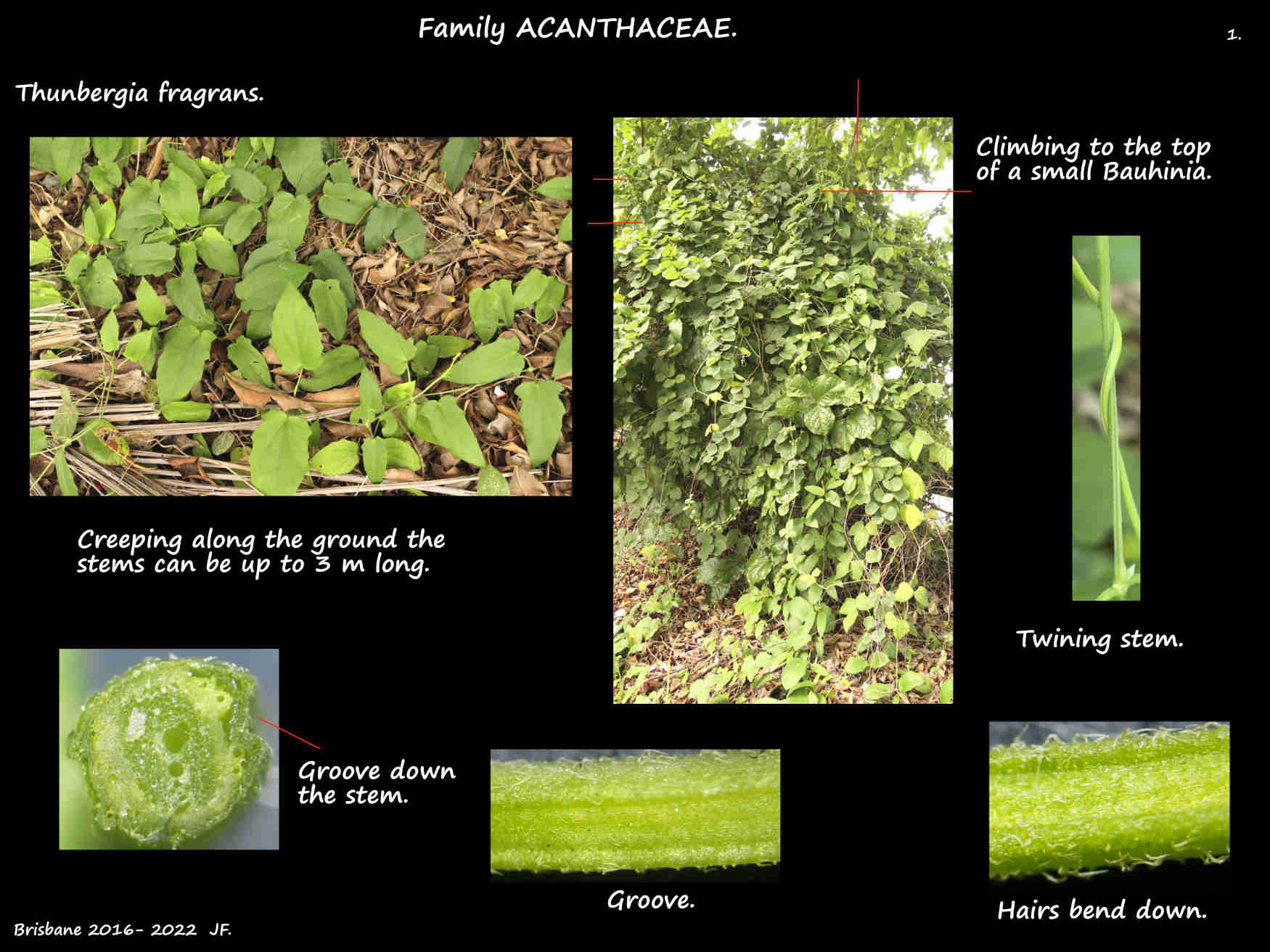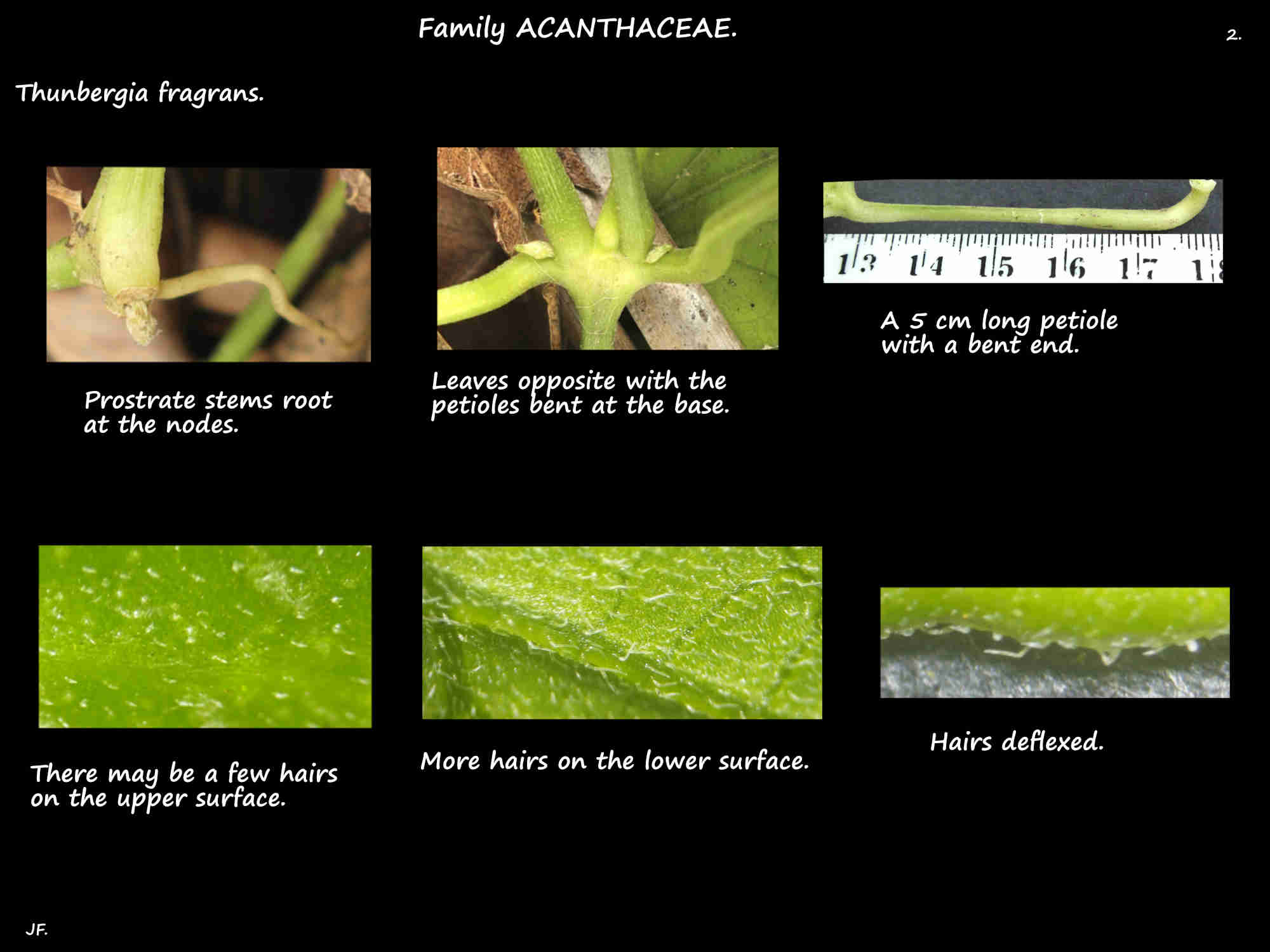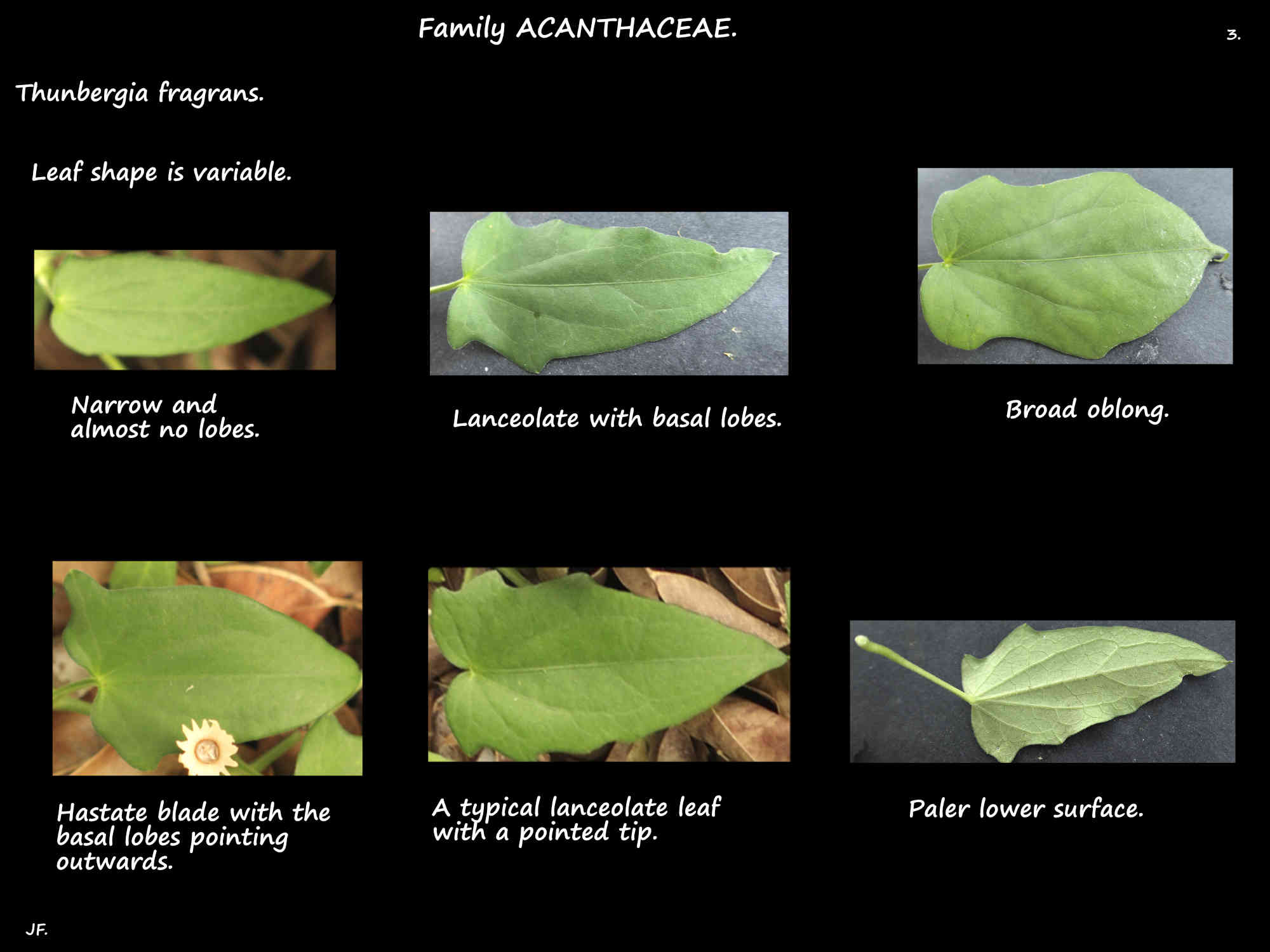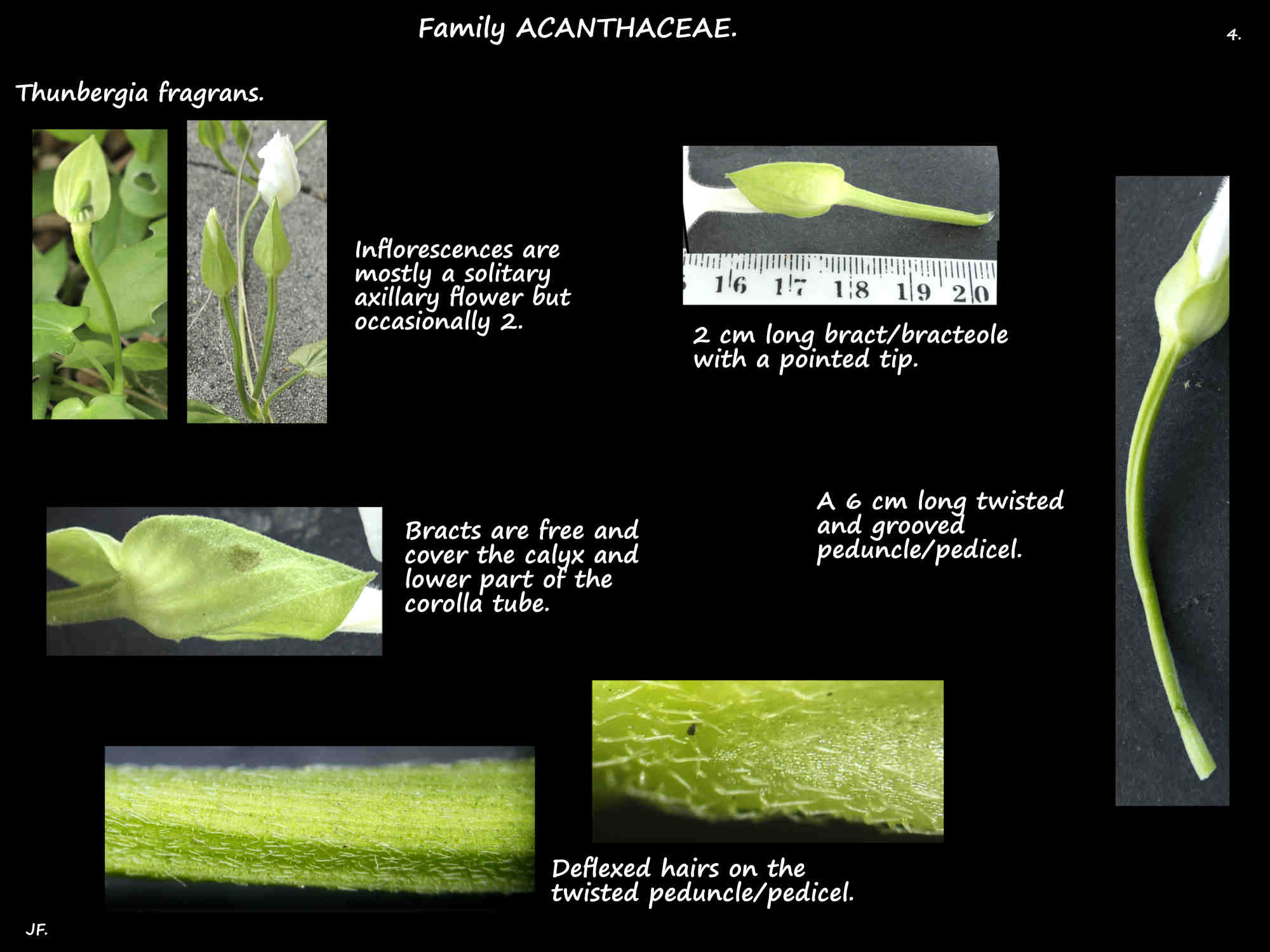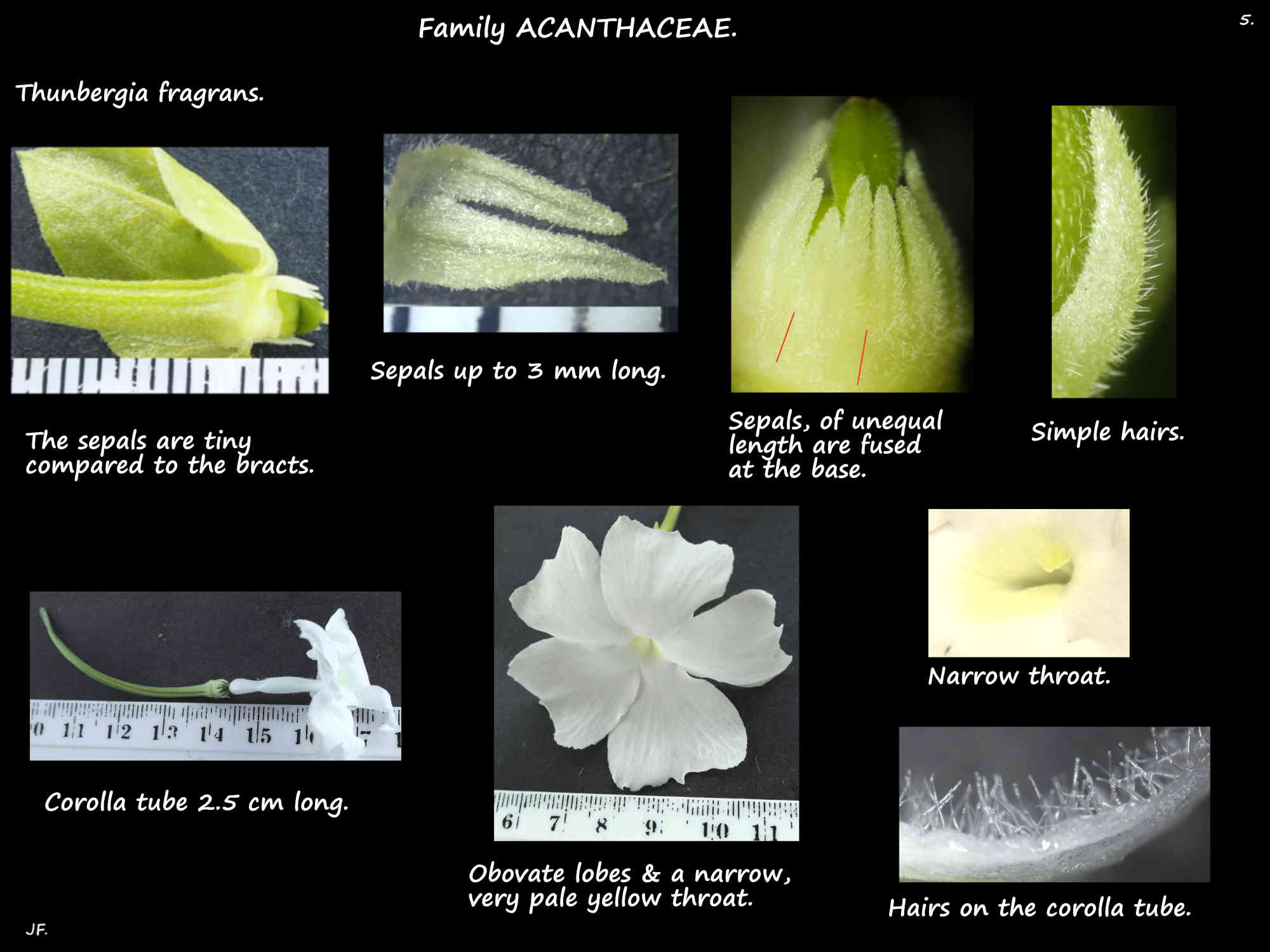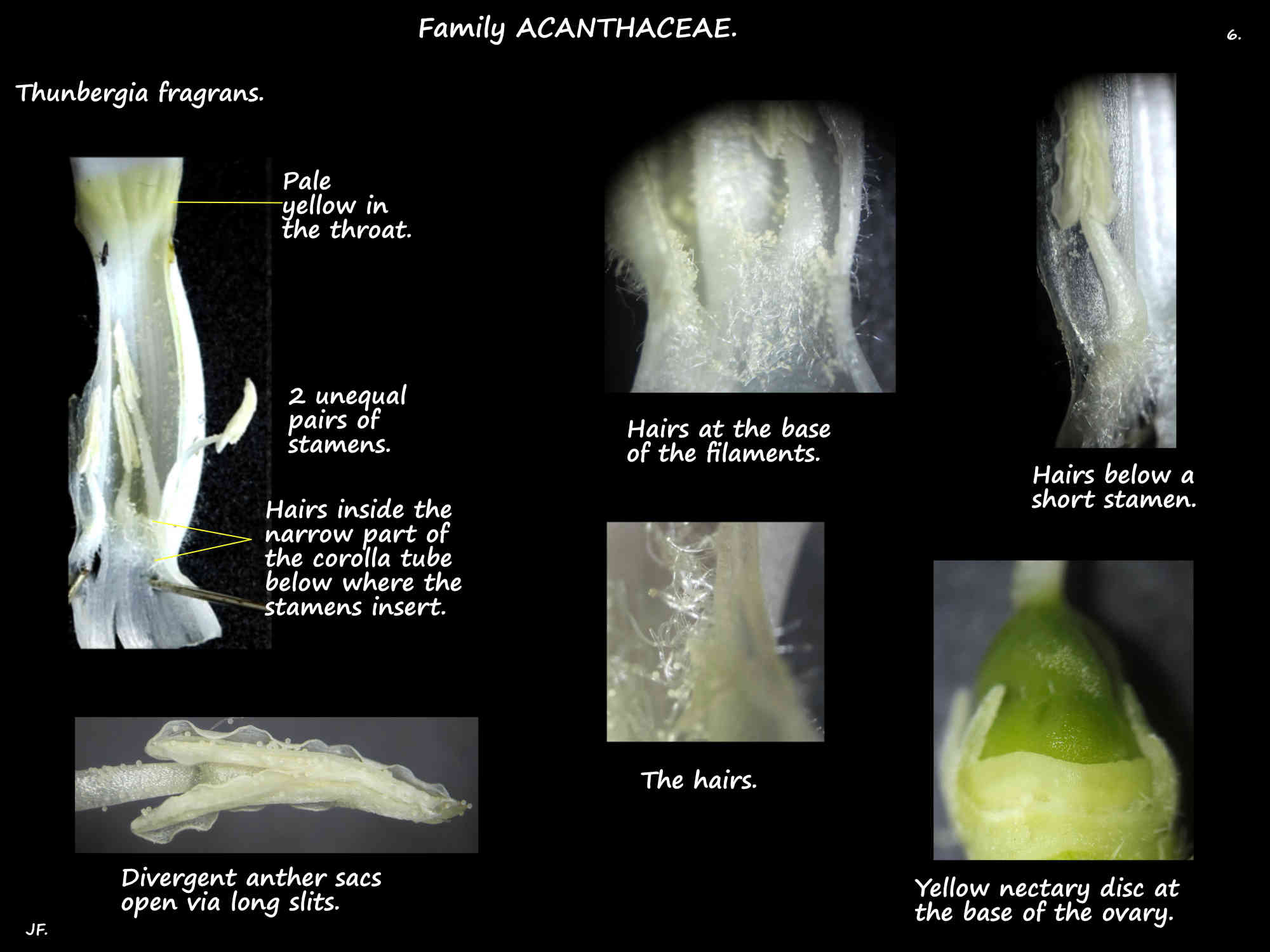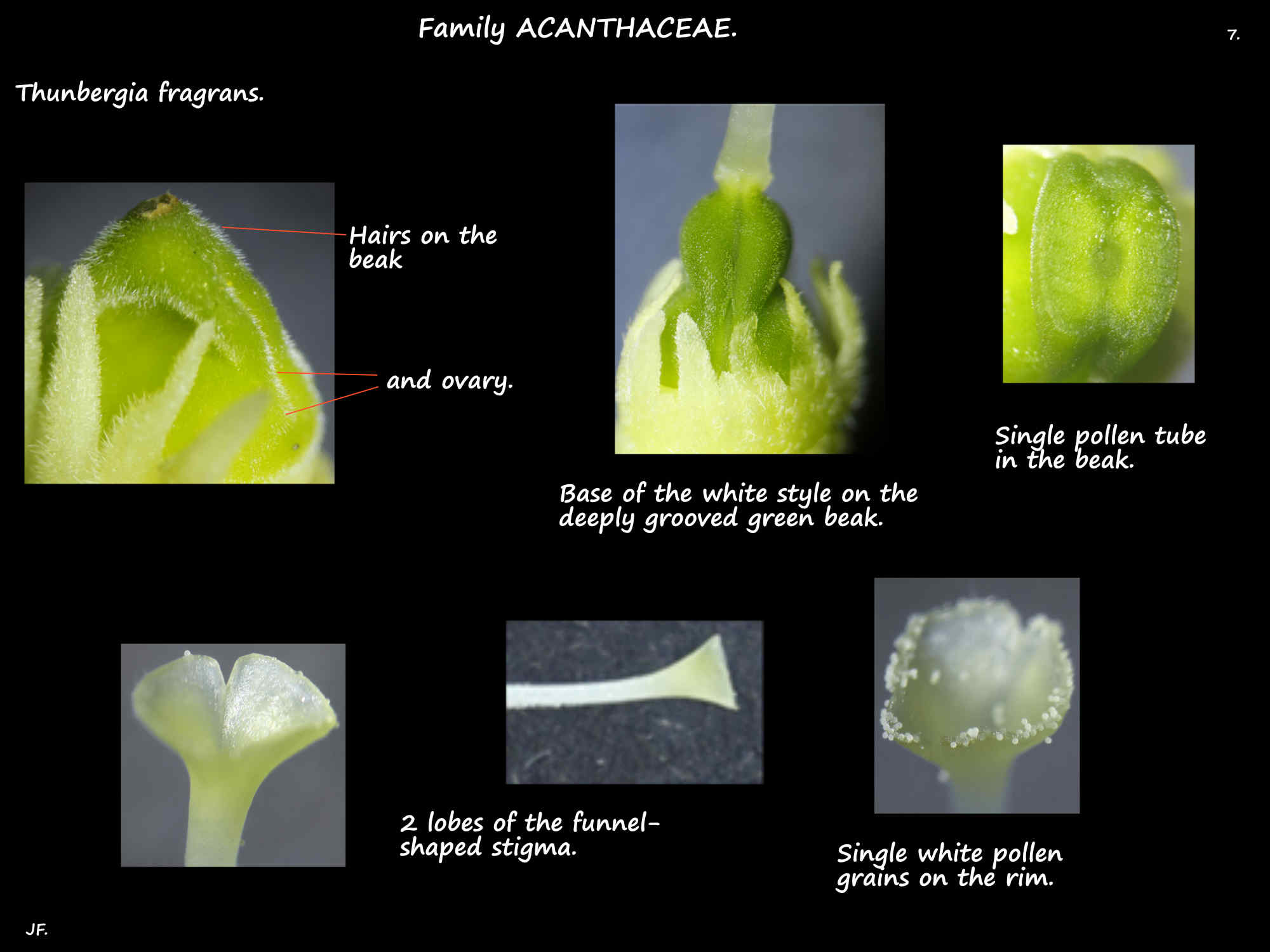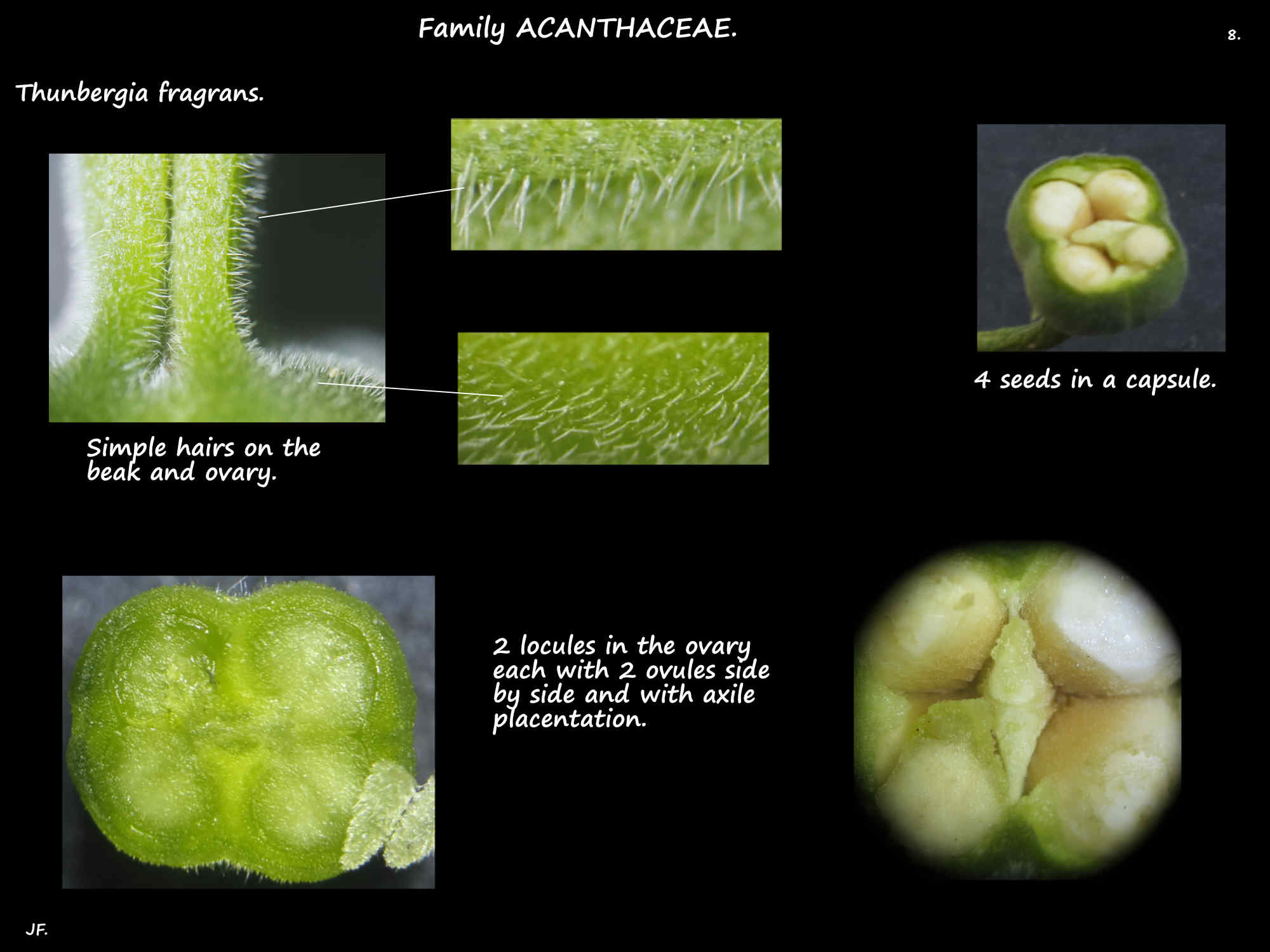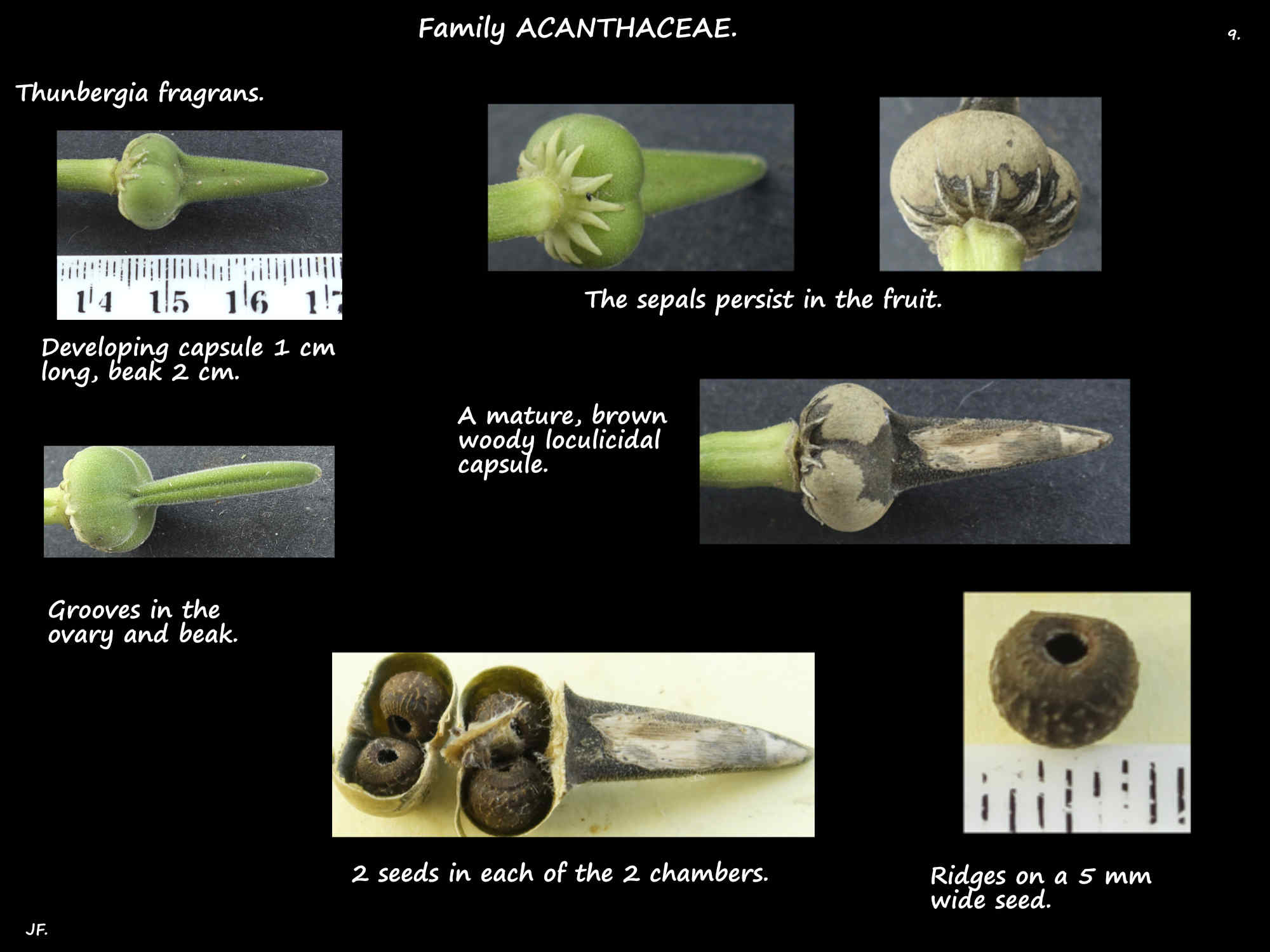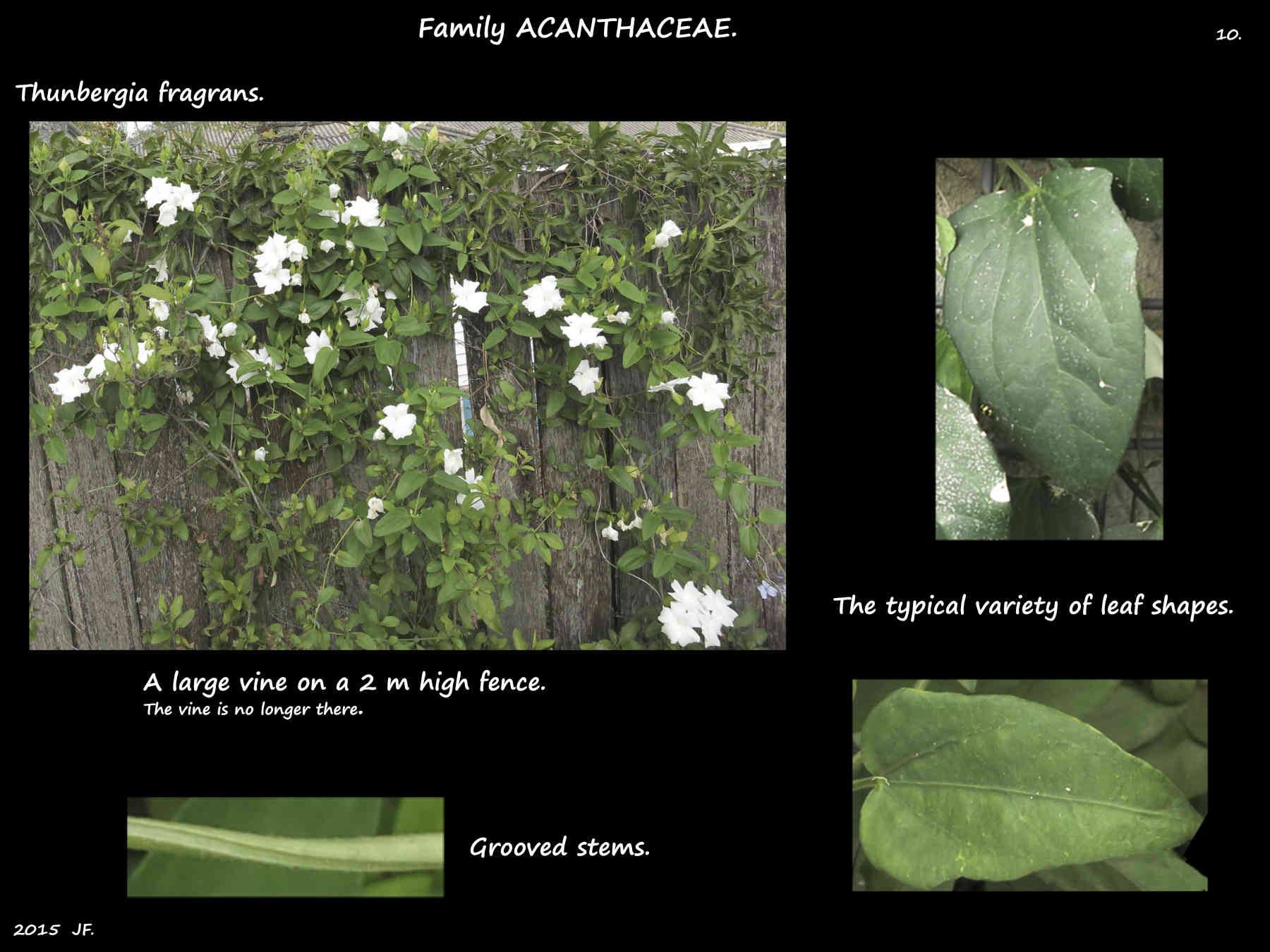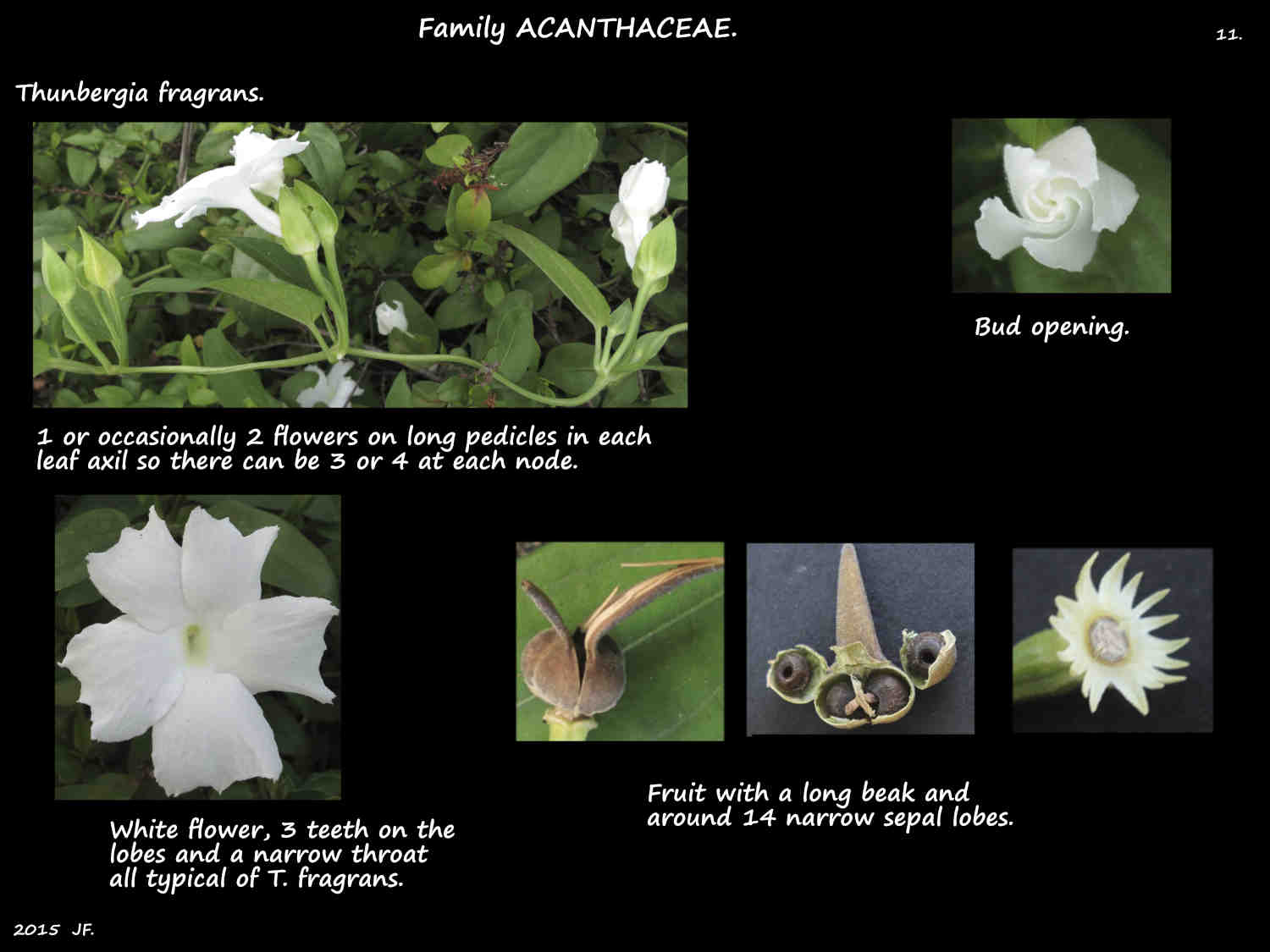Thunbergia fragrans.
White thunbergia or Sweet Clock Vine has also been known as Thunbergia convolvuloides and Thunbergia laevis.
All features are very variable.
They are perennial herbaceous vines that are prostrate or climb by twining.
The thin stems, up to 3 m long are roughly 4-sided, grooved and have hairs when young.
The oppositely arranged leaves are on petioles around 4 to 5 cm long.
The petioles are curved at the base and have simple hairs that bend downwards sharply (deflexed).
The blades are up to 12 or 14 cm long and 3.5 cm wide.
Their shape is variable and can be ovate, triangular, lanceolate, arrowhead or oblong.
The tip is pointed and the base is lobed with the lobes mostly pointing outwards (hastate) or sometimes backwards (sagittate).
The rest of the edge is usually smooth but may be slightly lobed or toothed.
There may be simple hairs on both surfaces but mainly on the veins underneath.
Inflorescences are almost always a solitary axillary flower or occasionally two.
The peduncle/pedicel is up to 8 cm long with simple downward pointing hairs.
The 2 ovate bracts/bracteoles, around 2 cm long have a pointed tip and deflexed hairs.
The 5 to 17 sepals, of unequal length are joined at the base for 2 mm.
The narrow pointed lobes, 2 to 3 mm long may be smooth or have simple hairs.
The corolla has 5 petals with their bases fused for 3 cm into a cylindrical tube with a localised constriction above the ovary.
With 5 flaring obovate lobes it is up to 5 cm across.
The corolla is white or a pale cream and has some hairs externally.
Vines usually have some flowers all year.
There are 4 stamens in 2 pairs of unequal lengths.
The longest are up to 1.2 cm long and they do not extend past the corolla tube.
They insert into the constricted area of the corolla tube and their bases are surrounded by hairs.
The 5 mm long anther sacs diverge and they open via longitudinal slits.
There is a nectiferous disc around the base of the ovary.
The ovary, of 2 fused carpels has 2 locules with 2 ovules in each.
The style can be up to 2 cm long and extends past the corolla tube.
The 2 lobes of the stigma form a funnel about 2 mm long.
The fruit are roughly spherical woody loculicidal capsules up to 2 cm long with a long beak.
The up to four seeds, around 4 mm across have ridges on all or part of the surface.
Identification of Thunbergia fragrans.
The following plant has all the described features of T. fragrans except for the ovary and style which are covered
in hairs as is the capsule.
Descriptions of Acanthaceae mention ovaries with hairs in some genera e.g. Acanthus.
The only references I have seen for hairs on ovaries in Thunbergia are:
a.) for T. grandiflora having the ovary ‘glabrous or pubescent’ and
b.) for T. fragrans in world Flora Online ‘Ovary glabrous’ and ‘Capsule glabrous or pubescen’.
The later seems contradictory with a smooth ovary becoming a hairy capsule.
Many descriptions make no mention of the ovary at all.
Using weeds.org.au/identify and picking the following unequivocal features (Qld, subtropical, disturbed sites &
roadsites, vine creeping & twining, tendrils absent, stem no prickles or thorns, leaves opposite,
petiole, flowers tubular, bisexual, white, 1-5 cm across, 5 petals and many sepals) it comes out as T. fragrans.
T. fragrans is very similar to our native T. arnhemica found across northern Australia.
There are also white forms of the purple or blue T. grandiflora and the orange or yellow T. alata.
T. alata ‘Alba’ is eliminated by having an anther spur and usually a black corolla throat.
T. grandiflora ‘Alba’ is eliminated by its woody base, entire calyx with no lobes and the anther spur.
Both these plants have been widely grown as garden ornamentals in the past.
T. arnhemica has a woody base, shorter leaves and petiole, a longer peduncle, some hairs on the back
of the anthers and a wider corolla throat. It is not seen in southern Queensland.
J.F.

